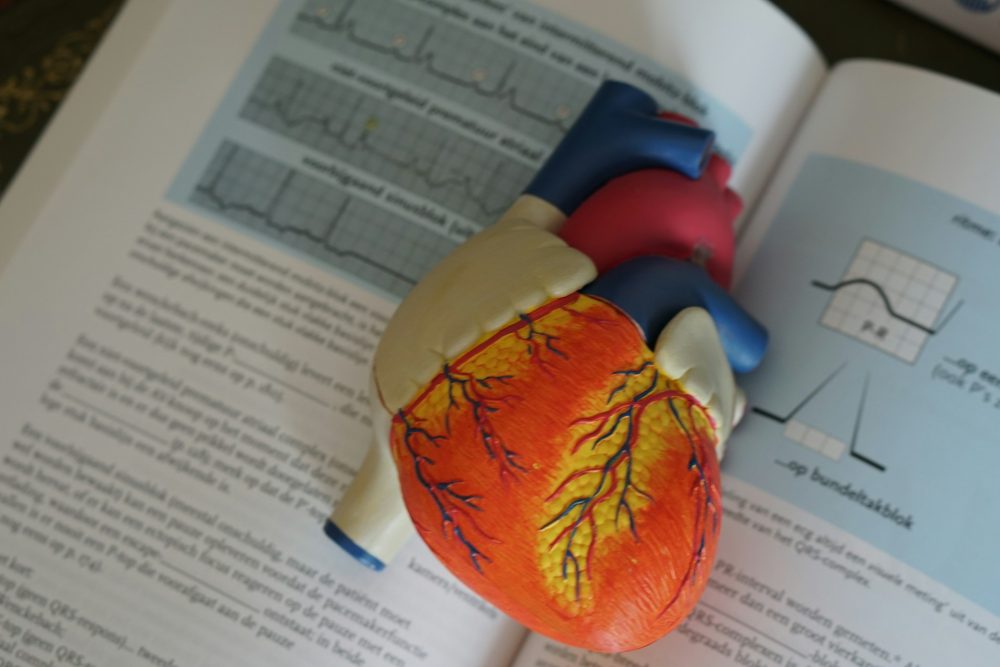Biotech
Gut-Derived Molecule Identified as Early Marker and Driver of Atherosclerosis
A CNIC-led study published in Nature identifies imidazole propionate (ImP), a gut-derived metabolite, as a blood biomarker and causal agent of early atherosclerosis. ImP activates systemic inflammation via the I1R receptor. Blocking I1R in animal models reduces disease progression, opening doors for early diagnosis and targeted treatment, beyond traditional risk factors like cholesterol.

Cardiovascular diseases continue to be the leading cause of death worldwide. In many cases, they are caused by atherosclerosis, an inflammatory process that hardens and narrows arteries due to the accumulation of fat in their walls. Despite controlling classic risk factors such as high cholesterol, hypertension, and smoking, it remains crucial to detect the disease in its early stages to prevent serious complications.
Along these lines, a study led by the National Center for Cardiovascular Research (CNIC) and published in the journal Nature has identified a new blood biomarker that could revolutionize the early diagnosis of atherosclerosis . This is imidazole propionate (ImP), a metabolite generated by the intestinal microbiota, whose presence in blood is associated with early disease activity, even in apparently healthy people.
CNIC-led study reveals imidazole propionate as both a diagnostic biomarker and causal agent of atherosclerosis, paving the way for early detection and new treatments
“This metabolite is produced exclusively by gut bacteria,” explained Annalaura Mastrangelo, a CNIC researcher and first author of the study . “In this work, we have seen that its presence in blood is linked to the development of active atherosclerosis in apparently healthy people.”
The most notable aspect of this discovery, according to Mastrangelo, is that “detecting this marker in blood represents a major advantage given that current tests require complex and expensive advanced imaging techniques that are not covered by social security. ImP levels in blood offer a marker with diagnostic value to facilitate the identification of healthy people with active atherosclerosis and enable early treatment.”
But the study not only points to ImP as an early marker of the disease, but goes a step further by identifying it as an agent actively involved in its development . “We not only observed that ImP is elevated in people with atherosclerosis, but that it is a causal agent of the disease,” stated Iñaki Robles-Vera, also first author of the study. “ImP consumption caused the appearance of plaques in the arteries in animal models of atherosclerosis. ImP activates the type 1 imidazoline receptor (I1R), generating an increase in systemic inflammation that contributes to the development of atherosclerosis.”
David Sancho, head of the CNIC’s Immunobiology Laboratory and project leader , emphasizes the significance of this finding: “This discovery is important because it opens up a new avenue for treatment.”
According to Sancho, experiments conducted in animal models show that “the use of I1R receptor blockers prevents the induction of atherosclerosis by ImP and reduces the progression of atherosclerosis in mouse models where the disease is induced with a high-cholesterol diet. This opens up the future possibility of a combined treatment of I1R blockade with the blockade of cholesterol production to achieve an effect that we hope will be synergistic and prevent the development of atherosclerosis.”
Furthermore, Sancho emphasizes that “these findings open up new possibilities for early diagnosis and personalized, early treatment of atherosclerosis. Thus, instead of focusing solely on cholesterol and other traditional factors, the presence of ImP in blood could be analyzed in the future as a risk factor. At the CNIC, we are working to develop drugs that block the harmful effects of ImP.”
Although led by the CNIC, this work represents an extensive international collaboration, in which institutions such as the Mount Sinai Fuster Heart Hospital and the Icahn School of Medicine at Mount Sinai (USA), the Jiménez Díaz Foundation Health Research Institute, the Autonomous University of Madrid, the Biomedical Research Network Center for Cardiovascular Diseases (CIBERCV), the University of Gothenburg (Sweden), the University of Athens (Greece), Inmunotek SL, the University of Michigan (USA), the Hospital de La Princesa, the Center for Metabolomics and Bioanalysis (CEMBIO) of the CEU San Pablo University, the University of Heidelberg (Germany) and the Sols-Morreale Biomedical Research Institute (IIBM-CSIC) have participated.
The research was supported by the “la Caixa” Foundation, through its CaixaResearch Health Research Call, with funding of €967,620.20.
__
(Featured image by Robina Weermeijer via Unsplash)
DISCLAIMER: This article was written by a third party contributor and does not reflect the opinion of Born2Invest, its management, staff or its associates. Please review our disclaimer for more information.
This article may include forward-looking statements. These forward-looking statements generally are identified by the words “believe,” “project,” “estimate,” “become,” “plan,” “will,” and similar expressions. These forward-looking statements involve known and unknown risks as well as uncertainties, including those discussed in the following cautionary statements and elsewhere in this article and on this site. Although the Company may believe that its expectations are based on reasonable assumptions, the actual results that the Company may achieve may differ materially from any forward-looking statements, which reflect the opinions of the management of the Company only as of the date hereof. Additionally, please make sure to read these important disclosures.
First published in GACETA MEDICA. A third-party contributor translated and adapted the article from the original. In case of discrepancy, the original will prevail.
Although we made reasonable efforts to provide accurate translations, some parts may be incorrect. Born2Invest assumes no responsibility for errors, omissions or ambiguities in the translations provided on this website. Any person or entity relying on translated content does so at their own risk. Born2Invest is not responsible for losses caused by such reliance on the accuracy or reliability of translated information. If you wish to report an error or inaccuracy in the translation, we encourage you to contact us

-

 Cannabis2 weeks ago
Cannabis2 weeks agoMedical Cannabis in Poland 2025: Growth, Stability, and Wider Access
-

 Impact Investing4 days ago
Impact Investing4 days agoBeyond the ESG Label: Integrating Sustainability for Long-Term Value
-

 Markets5 hours ago
Markets5 hours agoCocoa Markets Flat as Supply Improves and Demand Remains Weak
-

 Crypto2 weeks ago
Crypto2 weeks agoBitMine Surpasses 4 Million ETH Holdings Amid Market Volatility
















